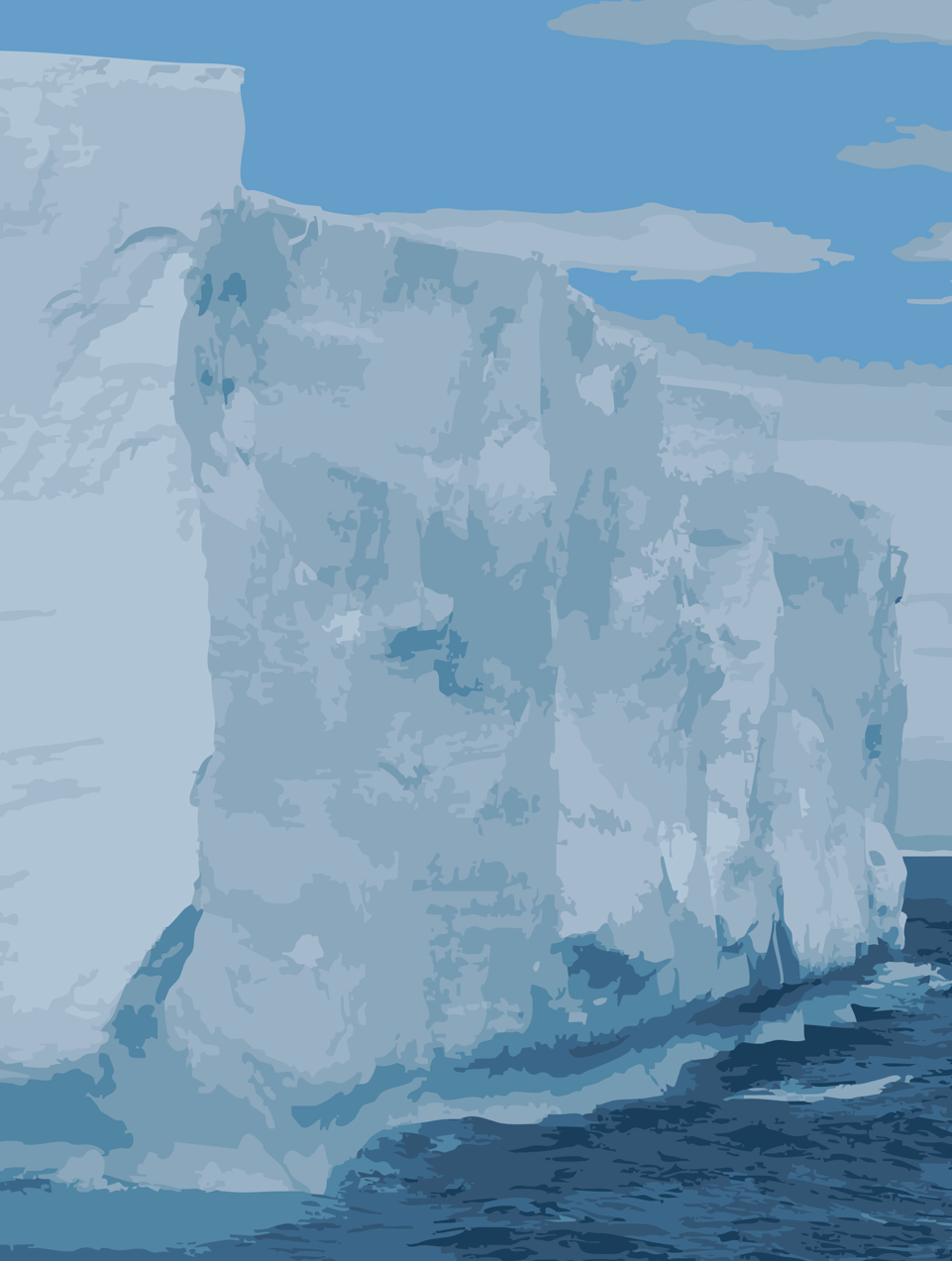

(artwork by Anne Chapuis)
An international team of scientists, led by researchers from Université Grenoble Alpes and the CNRS, warns that 60 percent of the floating ice shelves surrounding Antarctica are at risk of disappearing in the long term. The study, published in the scientific journal Nature, also involved VUB researcher Christoph Kittel.
These ice shelves play a crucial role as natural barriers that slow the flow of land ice from the Antarctic ice sheet into the ocean, thereby limiting sea level rise. According to the researchers, if greenhouse gas emissions remain high and global temperatures increase by an average of 12 degrees Celsius by the year 2300, the Southern Ocean will warm significantly. This warming would cause intense melting at the base of the ice shelves, eventually leading to their collapse. Once their supportive function is lost, the rate of sea level rise would accelerate dramatically.
Lead author Clara Burgard, affiliated with Université Grenoble Alpes and the CNRS, stresses that the results leave no doubt that the future of Antarctica directly depends on today’s climate policies. Burgard emphasizes: “The future of Antarctica quite literally lies in our hands, because what we do now to limit emissions will determine whether most ice shelves can survive or vanish forever.”
Antarctica’s Weak Spot
Floating ice shelves are the Achilles’ heel of the Antarctic ice sheet. They temporarily hold back the land ice but are extremely sensitive to changes in air and ocean temperature. Their disappearance would greatly accelerate sea level rise, posing a serious long-term risk to coastal regions around the world.
The researchers used a new analytical approach that accounts for uncertainties in climate and ice processes, such as ice fracturing and iceberg calving. This allowed them to estimate when specific ice shelves are likely to reach the point of no return.
What If We Do Nothing
The study shows that if greenhouse gas emissions continue to rise, 26 of the 64 major ice shelves could disappear by 2150, in a scenario consistent with a world roughly 8°C warmer than pre-industrial times. By 2300, global warming could reach 12°C, causing the loss of 38 ice shelves.
The main driver is ocean warming, which melts the ice from below until it passes a critical threshold. Once these natural support structures collapse, Antarctic land ice can flow into the ocean much faster. Over the long term, this could lead to up to 10 meters of sea level rise.
In a more optimistic scenario, where global emissions fall rapidly and the temperature increase remains below 2°C, only one of the 64 ice shelves would be lost. As Burgard notes, “These results make it clear that our choices today about greenhouse gas emissions will directly shape the future of Antarctica and our coastlines.”
The study demonstrates that drastic emission reductions can still make the difference between preserving or losing most of Antarctica’s ice shelves.
Reference
Burgard, C., Jourdain, N., Mosbeux, C., Caillet, J., Mathiot, P., and Kittel, C. Ocean warming threatens the viability of 60% of Antarctic ice shelves.Nature, 2025.
Belgian press contact
Christoph Kittel – Christoph.Kittel@vub.be (cell phone on demand)
Contact for international press
Clara Burgard: clarabu.matleave@gmail.com